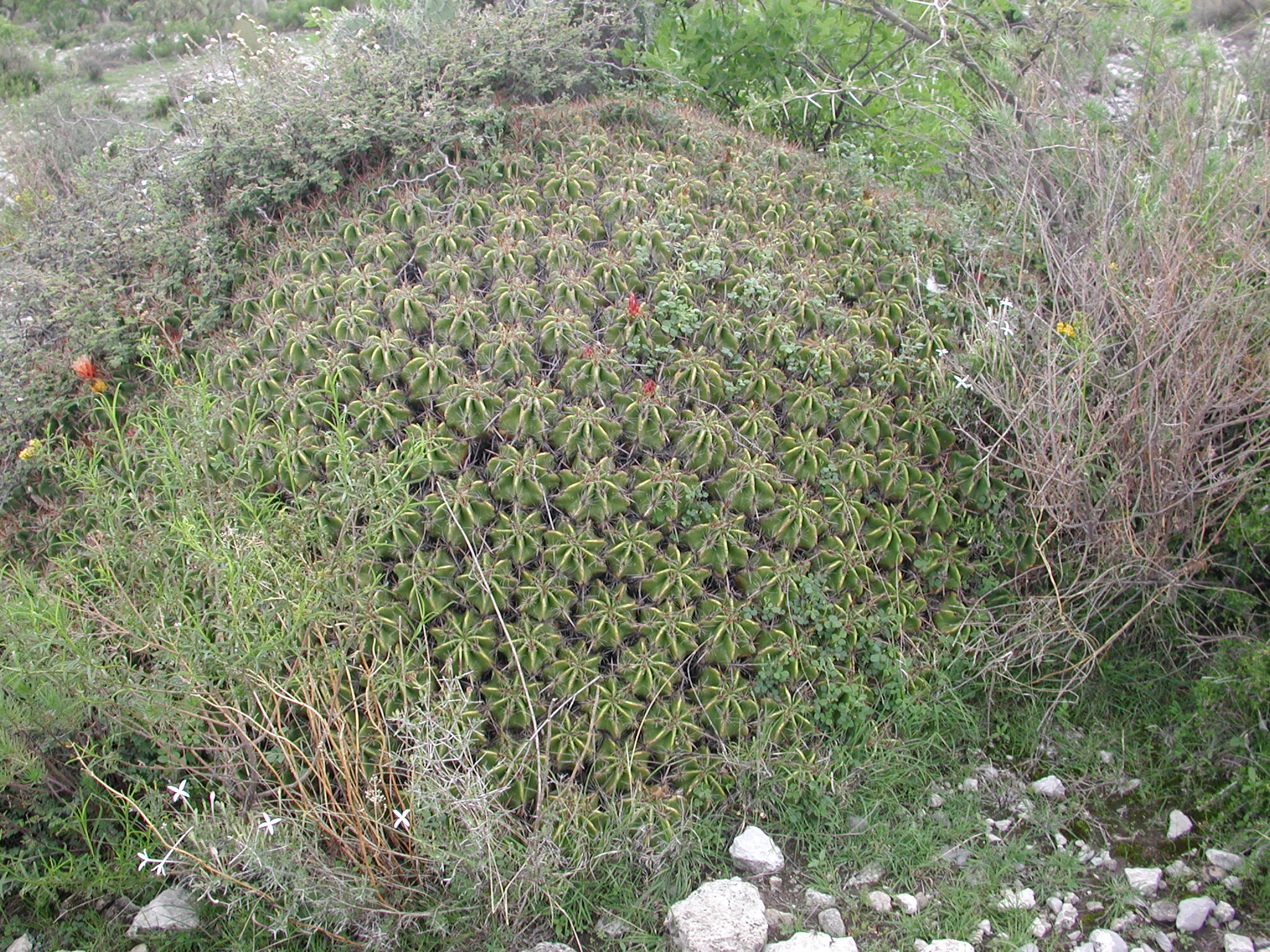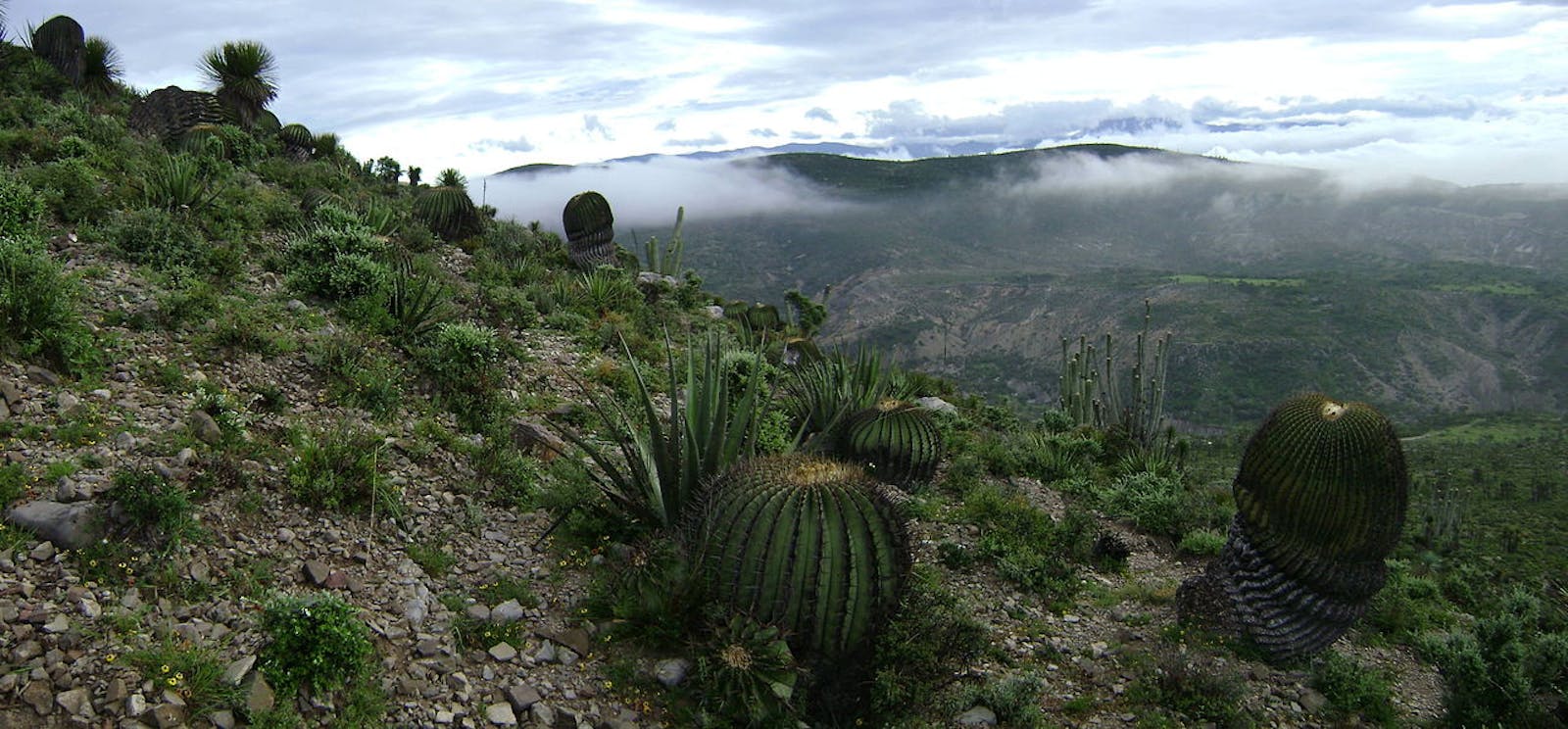Tehuacán Valley Matorral
The ecoregion’s land area is provided in units of 1,000 hectares. The protection goal is the Global Safety Net (GSN1) area for the given ecoregion. The protection level indicates the percentage of the GSN goal that is currently protected on a scale of 0-10.
Bioregion: Mexican Dry & Coniferous Forests (NT28)
Realm: Central America
Ecoregion Size (1000 ha):
991
Ecoregion ID:
610
Conservation Target:
25%
Protection Level:
6
States: Mexico
The Tehuacán Valley Matorral ecoregion in central Mexico is the center of endemism in the country and includes many vulnerable species, like the knob-scaled lizard. This species is unique in many ways: it has a flattened head and body to aid its movement around narrow rock crevices; and it is one of very few lizards that give birth to live young (viviparous) instead of eggs. These lizards are threatened by habitat fragmentation and degradation from cattle ranching and agricultural development. Due to their unique appearance and increasing rarity in the area, they are also threatened by the pet trade.
.jpg)
The flagship species of the Tehuacán Valley Matorral ecoregion is the knob-scaled lizard. Image credit: Creative Commons
The Tehuacán Valley Matorral ecoregion is situated in southeast Puebla and northwestern Oaxaca states in Mexico. It is a portion of the Mixtec-Oaxacan physiographic province, which is characterized by distinct geographic and landscape features formed by the Papaloapan River Valley. The ecoregion is bordered by the Sierra Madre Oriental to the north and the Sierra Norte of Oaxaca to the south, with the Sierra de Juárez as the limit; it is isolated from the arid areas of the central plateau by the trans-volcanic belt province. The climate is semi-dry hot, with summer rains and slight temperature variations. Mountains in the region provide a shade effect, differentiating the region from other arid environments in Mexico.
The composition of plant species in this ecoregion depend on the soil, climate, and landscape conditions throughout the valley. In the Papaloapan basin, cardonales and cactus species are abundant. Aggregations of Mexican organ pipe cactus—which can grow up to 10 m tall—barrel cactus, and other species specially adapted to the dry climate occupy the landscape. At higher elevations, prickly pear and other cactus species grow on soils of volcanic origin. In the Tehuacán Valley, an oak scrub dominates, while blue myrtle-cactus and other species can be found on the edge of the Salado River.
The region is among the richest in plant diversity, with over 2,700 species, almost 30% of which are found nowhere else in the world. At least 50 species in the aster family in the valley are also known to be endemic, and 9.86% of the total species of Mammillaria known to Mexico inhabit this region, 44% of which are endemic. Of the total species of Mexican columnar cacti, 55% are present in the Tehuacán-Cuicatlán Valley, and 30% of these species are endemic. This region also holds more Agave species than any other arid environment in Mexico.

Barrel cactus. Image credit: Creative Commons
This region is also considered an Endemic Bird Area. At least 90 species of birds have been recorded, many of which contribute to the dispersion of columnar cacti and their diversity; ten birds species are endemic, including the ocellated thrasher and bridled sparrow. The region also has an outstanding diversity of bats at 34 species, many of which are endangered, vulnerable, or rare. Many of these bat species are associated with the neotropics, which can be explained in part by the region’s closeness to the moist and cloud forests of Veracruz and Oaxaca.
Two federally protected areas in the region protect a conservable portion of the region’s xeric scrub. However, management programs currently fail to consider the needs of the local villagers when setting biological conservation goals.
This region is threatened by agricultural and urban expansion. Cattle farming and agricultural conversion in the region dramatically alter the local ecological processes and contribute to habitat loss. The construction of dams, road openings, mining, and urban expansion also threaten native habitat, and the illegal extraction and trade of exotic plant species has resulted in many cacti acquiring endangered statuses. Urban expansion into arid lands has also severely damaged native habitat through soil erosion and water pollution.
The priority conservation actions for the next decade will be to: 1) incorporate local perspectives and knowledge into conservation management programs to improve support; 2) ensure future urban expansion incorporates sustainable development objectives; and 3) strengthen enforcement against the illegal plant trade.
Citations
1. Valero, A., J. Schipper, and T. Allnutt. 2018. Southern North America: Southern Mexico. https://www.worldwildlife.org/ecoregions/nt1316. Accessed June 23, 2018.
2. Valiente-Banuet, A., M. C. Arizmendi, A. Rojas-Martínez, and L. Domínguez-Canseco. 1996. Ecological relationships between columnar cacti and nectar-feeding bats in México. Journal of Tropical Ecology. 12: 1-17.
3. Challenger, A. 1998. Utilización y conservación de los ecosistemas terrestres de México. Pasado, presente y futuro. Conabio, IBUNAM y Agrupación Sierra Madre, México.
4. Villaseñor, J. L., P. Dávila, and F. Chiang. 1990. Fitogeografía, del Valle de Tehuacán-Cuicatlán. Bol. Soc. Bot. México. 50: 135-149.



